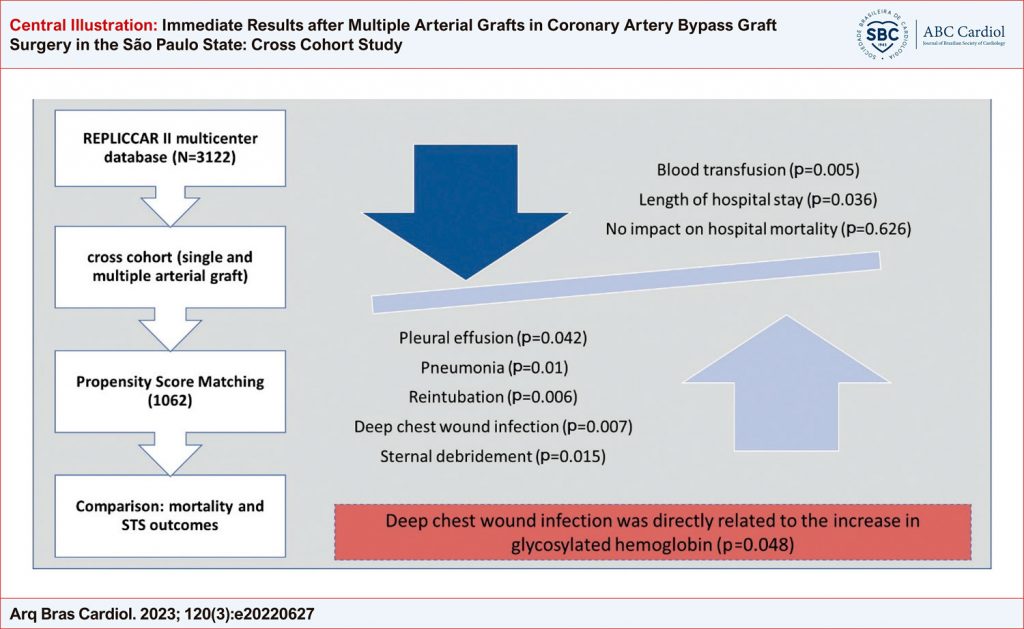Arq. Bras. Cardiol. 2023; 120(3): e20220627
Immediate Results after Multiple Arterial Grafts in Coronary Artery Bypass Graft Surgery in the São Paulo State: Cross Cohort Study
This Original Article is referred by the Short Editorial "Multi-Arterial Grafting in Surgical Coronary Revascularization. The Renewed Quest for Enhanced Outcomes".
Abstract
Background
The short-term results after using arterial grafts still raise questions and doubts for medical society.
Objective
To compare the immediate outcomes of patients undergoing single arterial graft versus multiple arterial grafts coronary artery bypass grafting surgery.
Methods
Cross-sectional cohort study in the São Paulo Registry of Cardiovascular Surgery II (REPLICCAR II). Perioperative data from 3122 patients were grouped by the number of arterial grafts used, and their outcomes were compared: reoperation, deep sternal wound infection (DSWI), stroke, acute kidney injury, prolonged intubation (>24 hours), short hospital stay (<6 days), prolonged hospital stay (>14 days), morbidity and mortality. Propensity Score Matching (PSM) matched 1062 patients, adjusted for the mortality risk.
Results
After PSM, the single arterial graft group showed patients with advanced age, more former smokers, hypertension, diabetes, stable angina, and previous myocardial infarction. In the multiple arterial grafts, there was a predominance of males, recent pneumonia, and urgent surgeries. After the procedure, there was a higher incidence of pleural effusion (p=0.042), pneumonia (p=0.01), reintubation (p=0.006), DSWI (p=0.007), and sternal debridement (p=0.015) in the multiple arterial grafts group, however, less need for blood transfusion (p=0.005), extremity infections (p=0.002) and shorter hospital stays (p=0.036). Bilateral use of the internal thoracic artery was not related to increased DSWI rate, but glycosylated hemoglobin >6.40% (p=0.048).
Conclusion
Patients undergoing the multiarterial technique had a higher incidence of pulmonary complications, and DSWI, where glycosylated hemoglobin ≥6.40%, had a greater influence on the infectious outcome than the choice of grafts.
1,248

